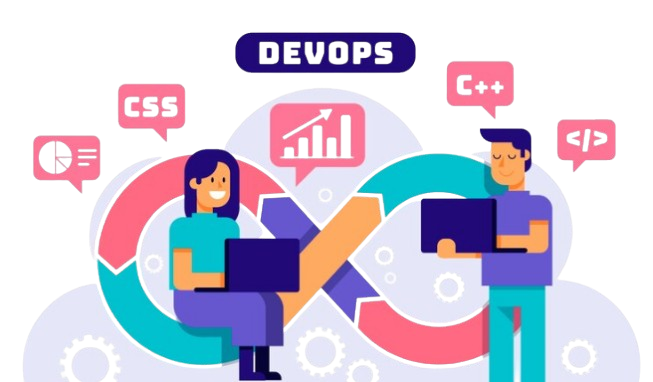Shifting Left in DevOps Security is not just a trend but a necessity in today’s dynamic threat landscape. By embedding security from the earliest stages of development, teams can create more secure applications, reduce vulnerabilities, and achieve faster delivery times.
In today’s fast-paced world of software development, security is no longer just a final checkpoint before deployment. It has become an integral part of the entire development process. The term “Shifting Left” refers to the practice of integrating DevOps Security earlier in the software development lifecycle, ensuring that potential security vulnerabilities are identified and addressed from the very beginning, rather than waiting until the end.
As DevOps continues to streamline and accelerate the software development process, the need for DevOps Security has grown exponentially. Traditional security approaches, which once focused on post-development stages, are becoming obsolete. Organizations are realizing that security must be ingrained into every phase of development to keep up with the evolving threat landscape and prevent costly breaches.
In this blog post, we will explore the concept of Shifting Left in DevOps Security, its benefits, and how organizations can successfully implement this strategy to safeguard their applications and infrastructure.
The Importance of Shifting Left in DevOps Security
As organizations adopt the DevOps methodology to achieve faster release cycles, automation, and improved collaboration, security must keep up. Traditional security models that involve manual checks or siloed security teams can cause bottlenecks in the development pipeline, slowing down releases and increasing the risk of vulnerabilities being overlooked.

Shifting Left means integrating DevOps Security practices from the earliest stages of development, often starting with the design phase. By embedding security measures early on, teams can detect and resolve vulnerabilities before they become critical issues, thereby reducing the risk of attacks and the overall cost of fixing problems later in the cycle.
The end result? Secure, resilient software that is delivered faster, with fewer security-related interruptions.
Benefits of Shifting Left in DevOps Security
1. Improved Vulnerability Detection
One of the key benefits of Shifting Left is that it allows for earlier detection of security vulnerabilities. By incorporating DevOps Security tools and practices from the beginning, developers can catch flaws before they reach production. Continuous scanning, static analysis, and vulnerability testing can all be integrated into the CI/CD pipeline to flag potential issues as code is written.
2. Cost and Time Savings
Fixing security flaws during the development phase is far less expensive and time-consuming than addressing them post-release. When security issues are discovered late in the process, they may require reworking large portions of code or even delaying the release entirely. By Shifting Left, teams can address problems proactively, saving time, money, and resources.
3. Enhanced Collaboration Between Teams
The integration of DevOps Security early in the lifecycle promotes better collaboration between development, operations, and security teams. Rather than viewing security as a separate responsibility, developers become more mindful of secure coding practices. This shared responsibility fosters a culture of collaboration, where security becomes everyone’s concern, ensuring a more cohesive and secure development process.
4. Reduced Attack Surface
By addressing security vulnerabilities earlier in the development process, the attack surface is significantly reduced. Continuous testing and automated security checks throughout the pipeline ensure that new vulnerabilities are not introduced into the codebase. Shifting Left helps organizations stay ahead of potential threats by proactively minimizing points of exposure.
5. Faster Incident Response
Shifting Left in DevOps Security not only helps in preventing vulnerabilities but also enables faster detection and response to potential threats. Automated monitoring and security tools in the DevOps pipeline provide real-time alerts on potential issues, allowing teams to address them immediately. This quick response is crucial for preventing small vulnerabilities from escalating into large-scale breaches.
Best Practices for Shifting Left in DevOps Security
1. Implement Continuous Security Testing
Continuous security testing is a fundamental practice for Shifting Left. By integrating tools such as static code analysis, dynamic testing, and security scanning into the CI/CD pipeline, teams can continuously monitor code for vulnerabilities as it is written and deployed. Automated testing ensures that security is enforced consistently throughout the development process.
2. Emphasize Secure Coding Practices
Educating developers on secure coding practices is essential for embedding DevOps Security from the beginning. By fostering a security-first mindset, teams can write code with fewer vulnerabilities, reducing the need for time-consuming fixes later on. Regular training sessions and access to resources like OWASP guidelines can go a long way in empowering developers to prioritize security in their work.
3. Adopt Security as Code
Security as Code (SaC) is a best practice that involves automating security policies and controls through code. By treating security configurations as code, teams can ensure that security measures are applied consistently across the entire environment. This approach makes it easier to manage security policies, track changes, and enforce compliance throughout the pipeline.
4. Utilize Automated Tools and AI
Automation is a key component of DevOps, and the same principle applies to DevOps Security. Automated security tools, such as vulnerability scanners and threat detection systems, help identify potential risks early in the development cycle. AI-powered tools can also analyze code patterns to detect anomalies or predict areas where vulnerabilities are likely to emerge.
5. Foster a Culture of Collaboration
Conclusion
The modern development lifecycle requires a proactive approach to security. Shifting Left in DevOps Security is not just a trend but a necessity in today’s dynamic threat landscape. By embedding security from the earliest stages of development, teams can create more secure applications, reduce vulnerabilities, and achieve faster delivery times.
Tanbits offers devops services to help organizations integrate security seamlessly into their development pipelines.
As organizations continue to embrace DevOps, Shifting Left will play a critical role in ensuring that security is no longer an afterthought but a core component of the development process. By adopting best practices for Shifting Left, companies can stay ahead of potential threats, reduce risks, and deliver high-quality, secure software at scale.
BACK










